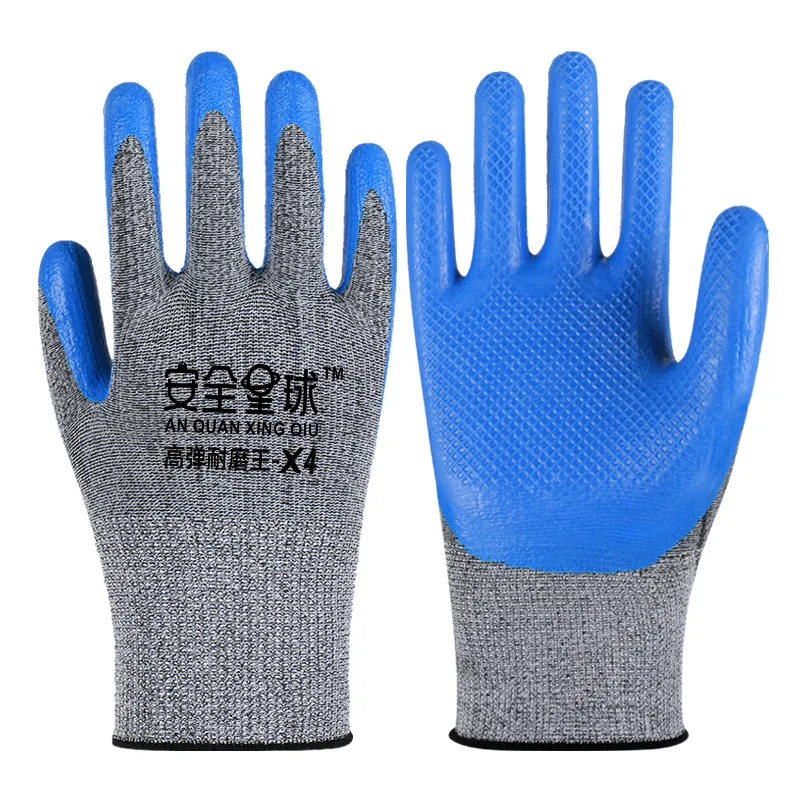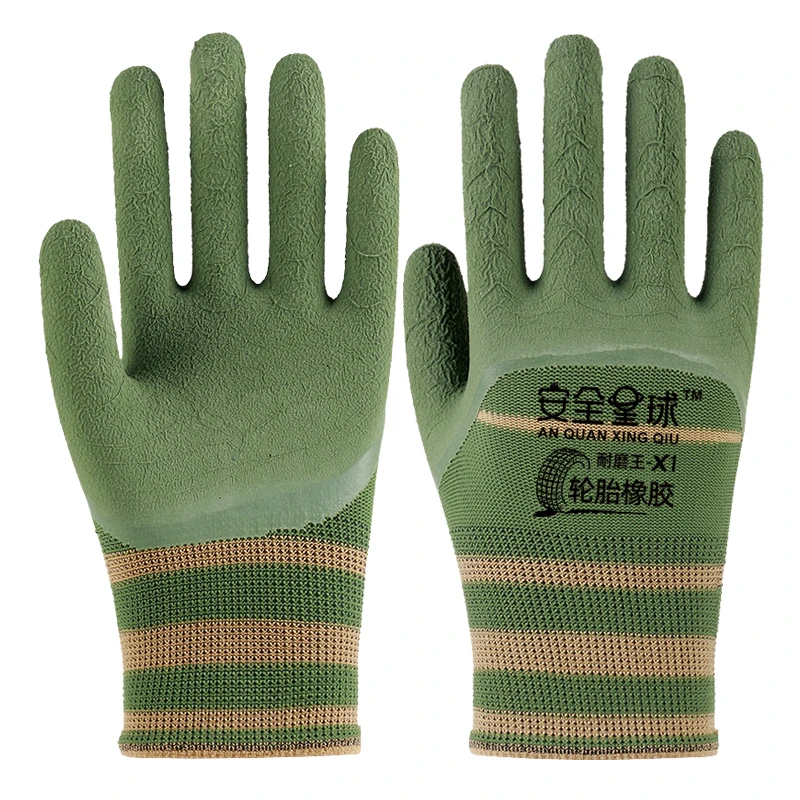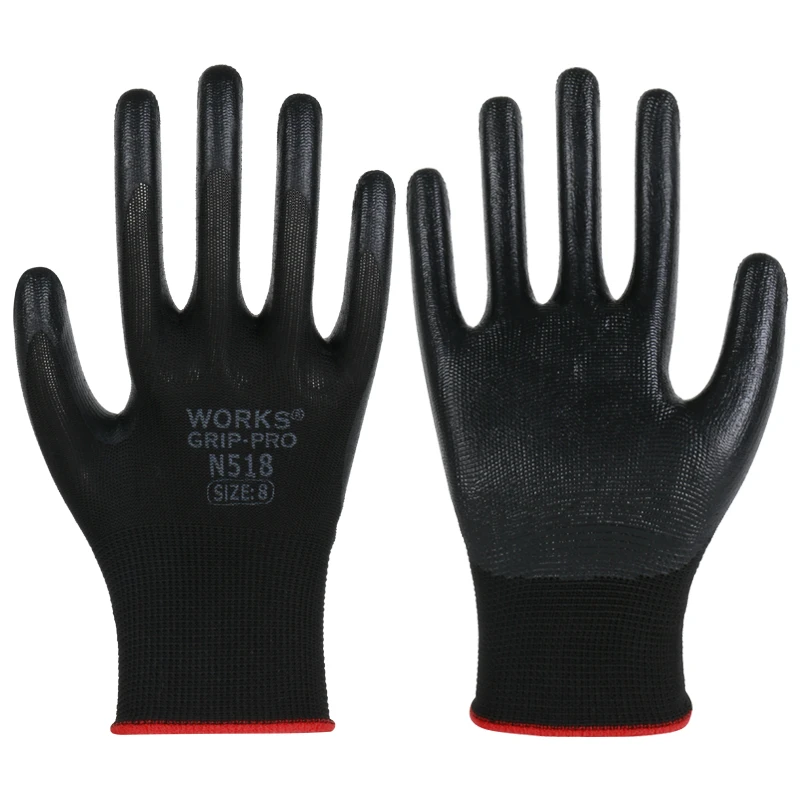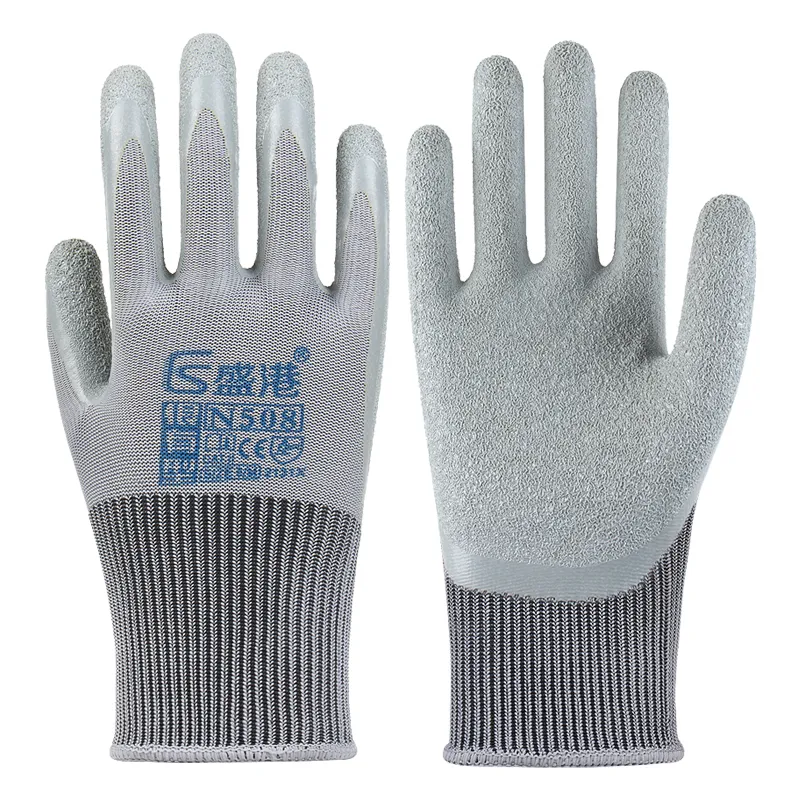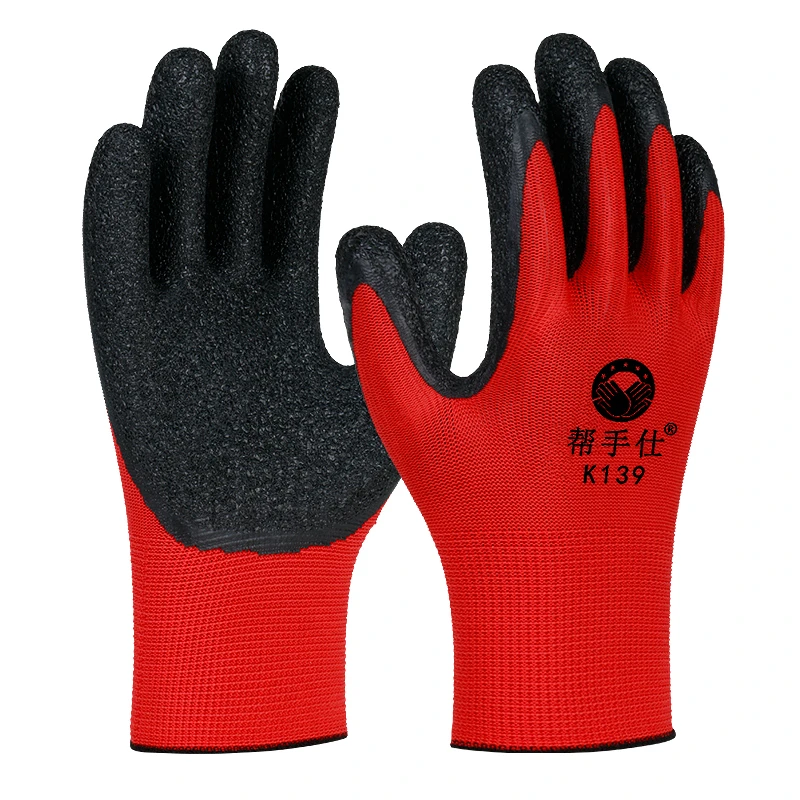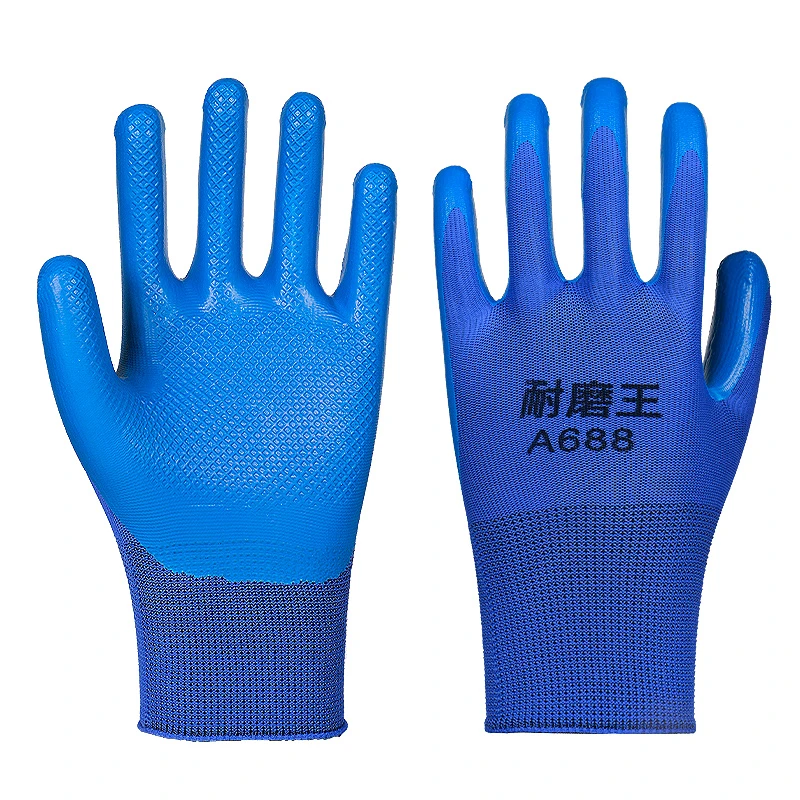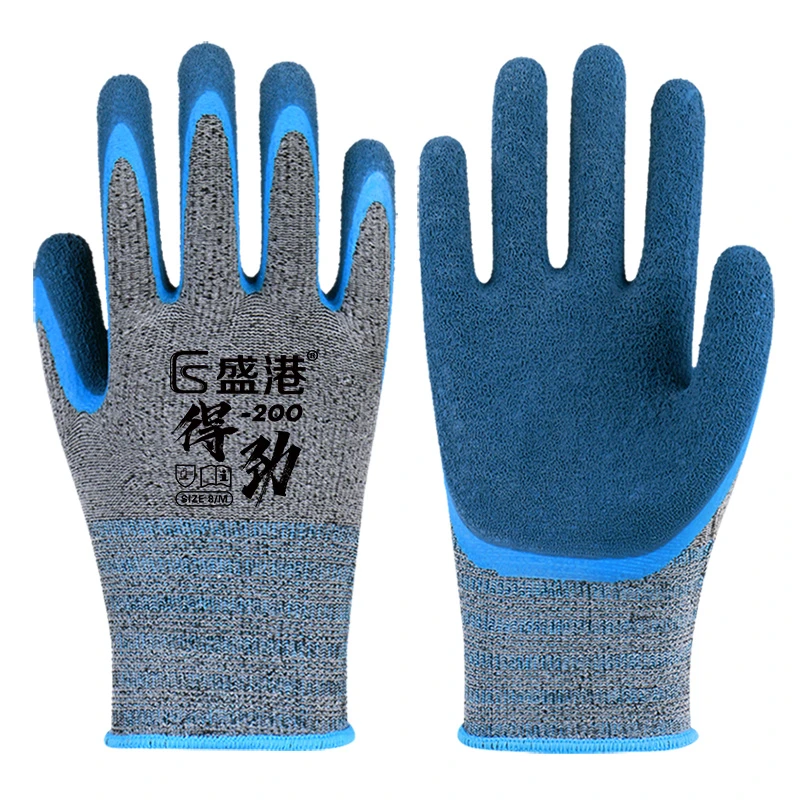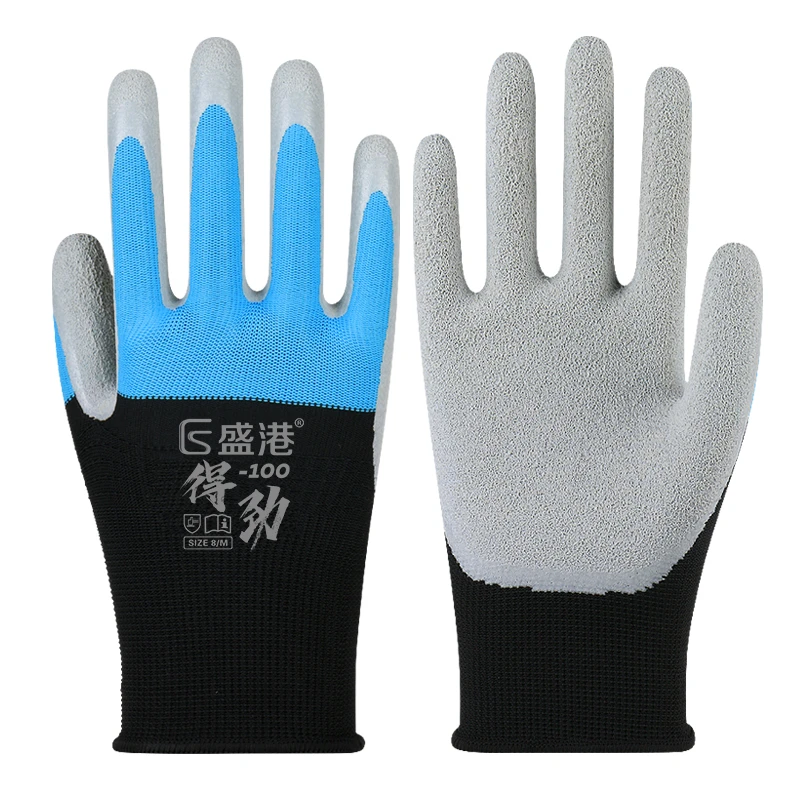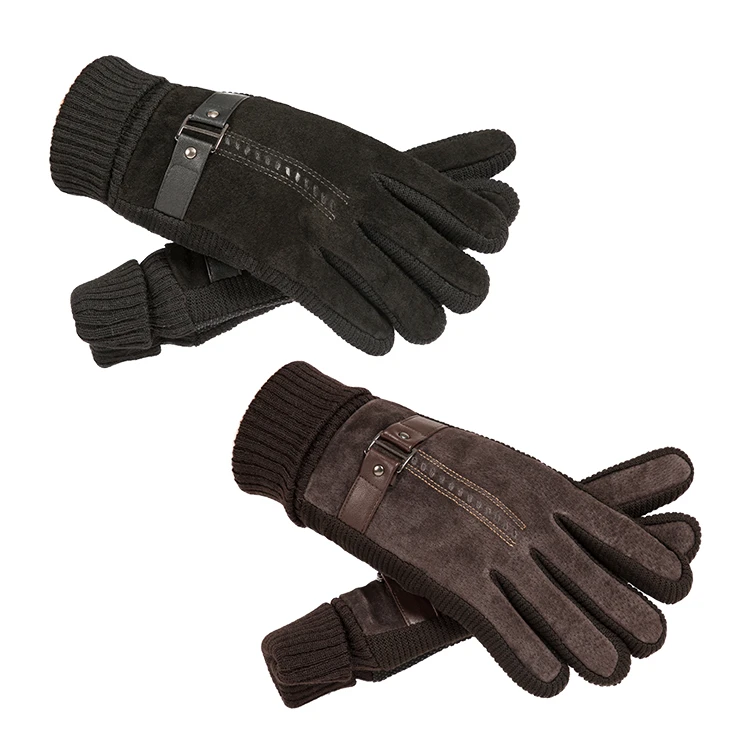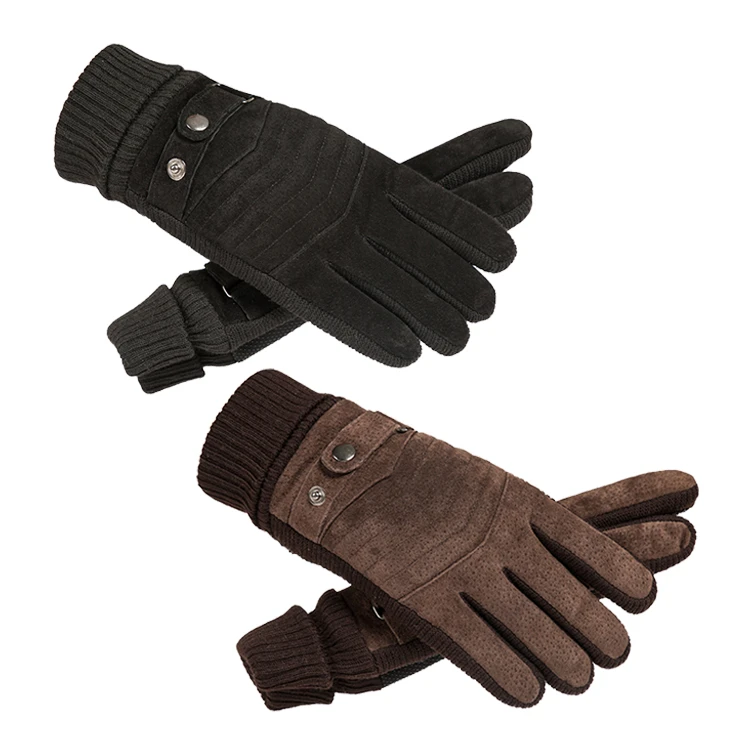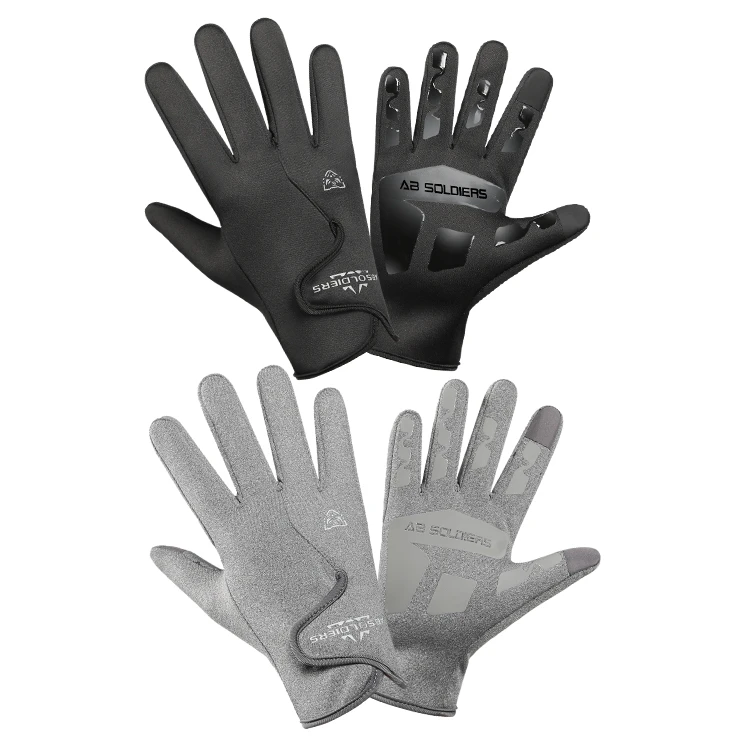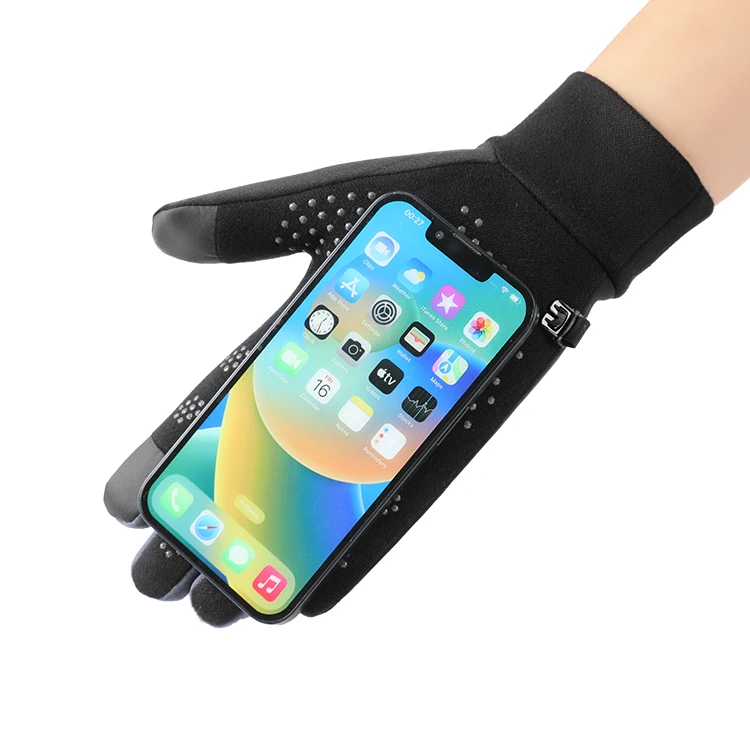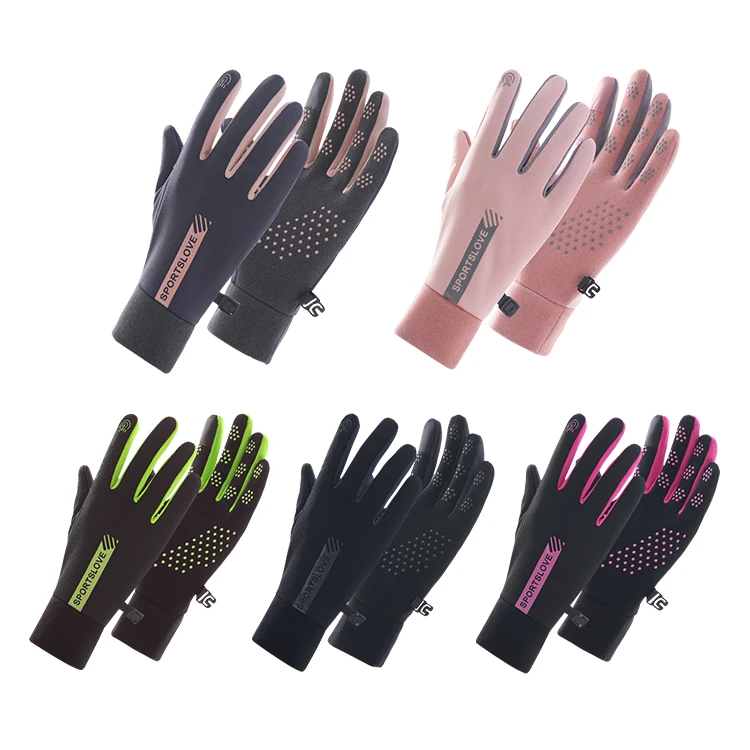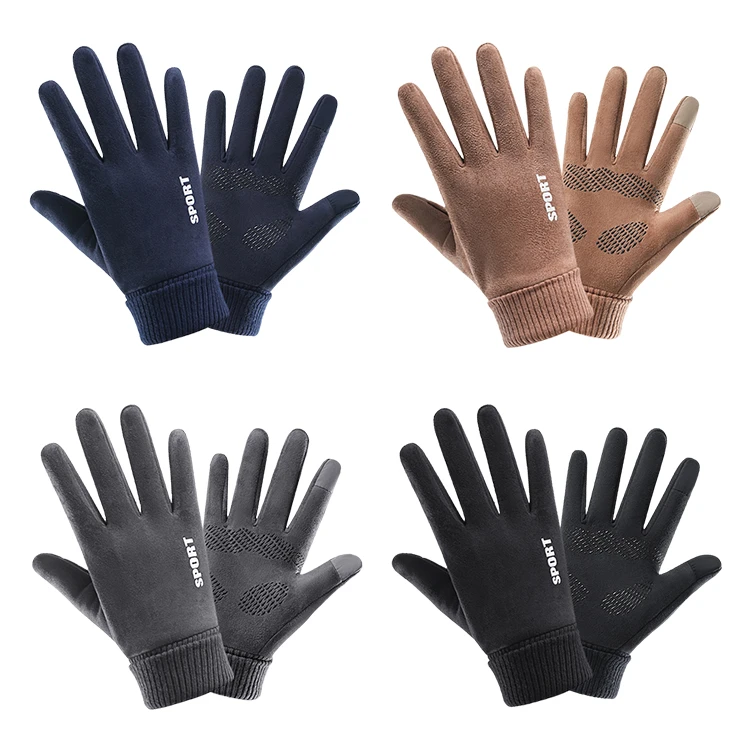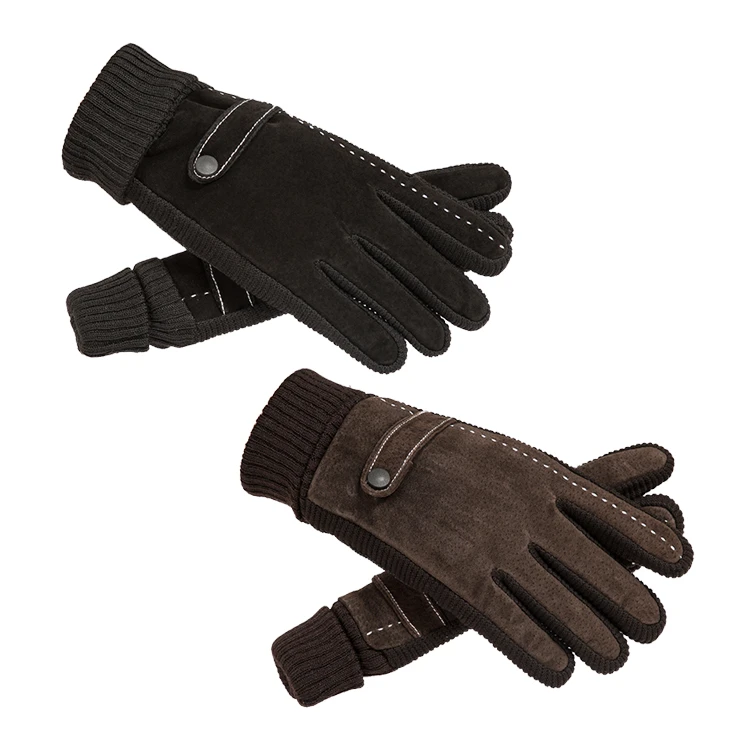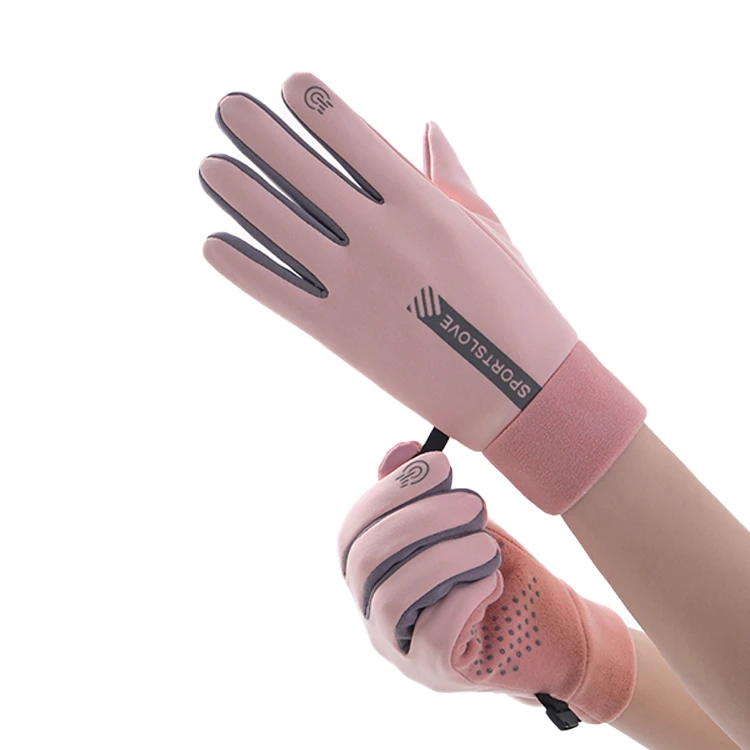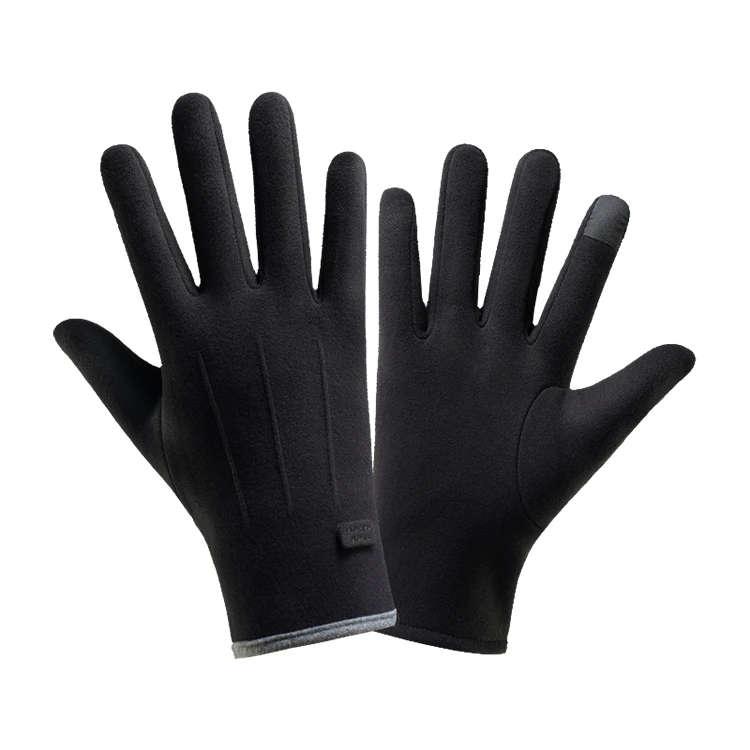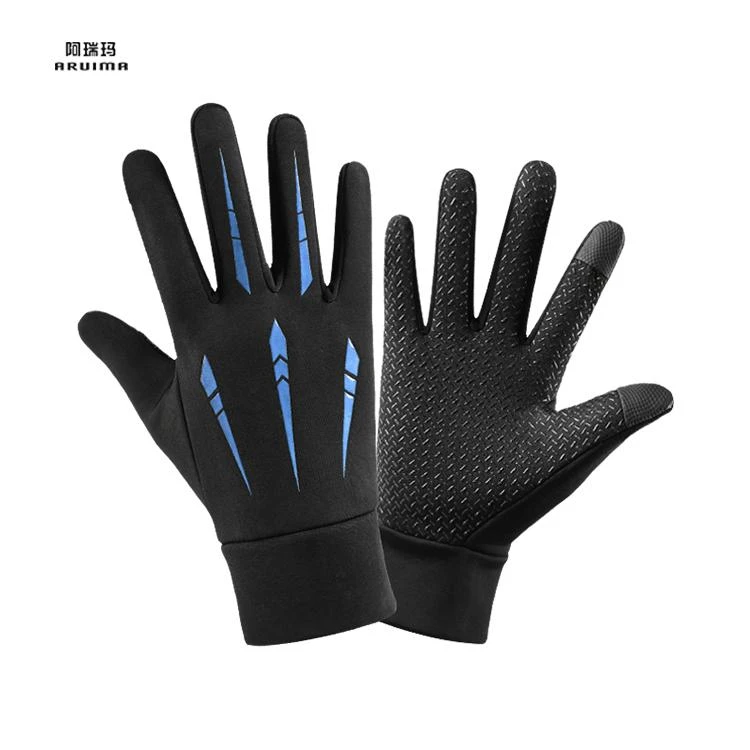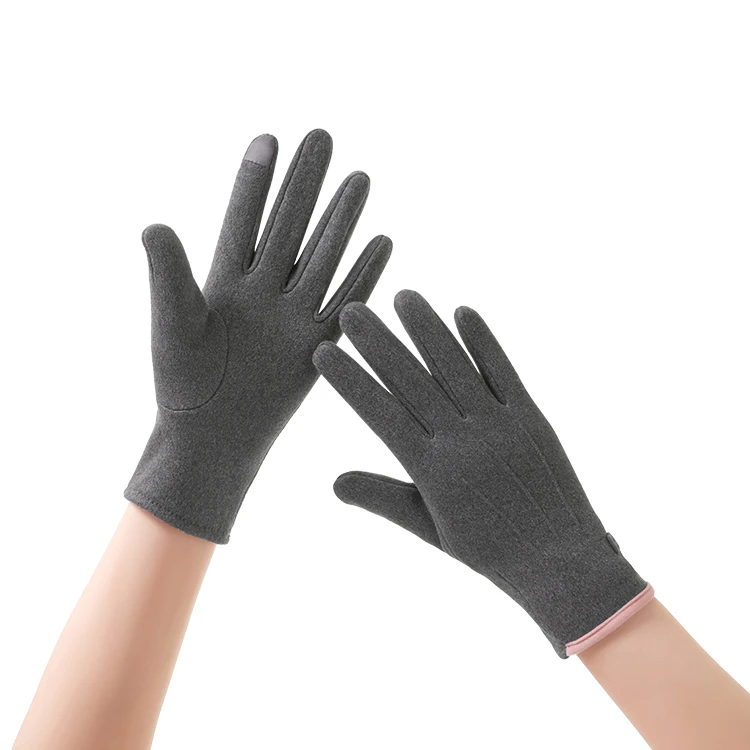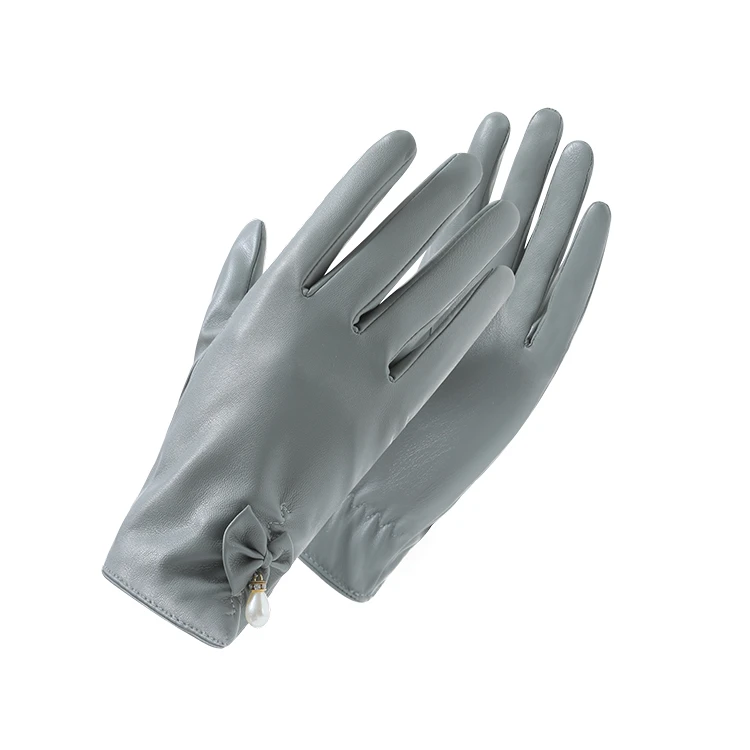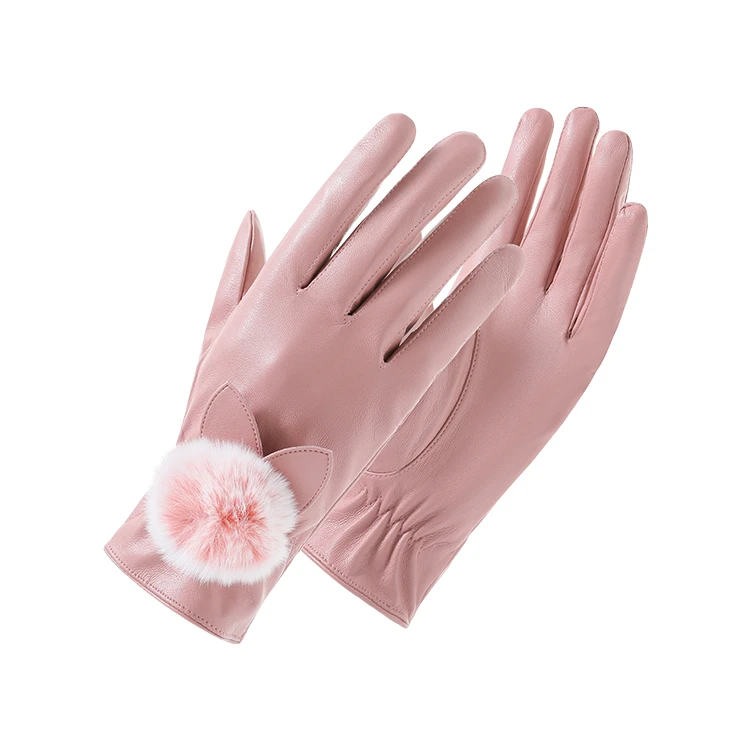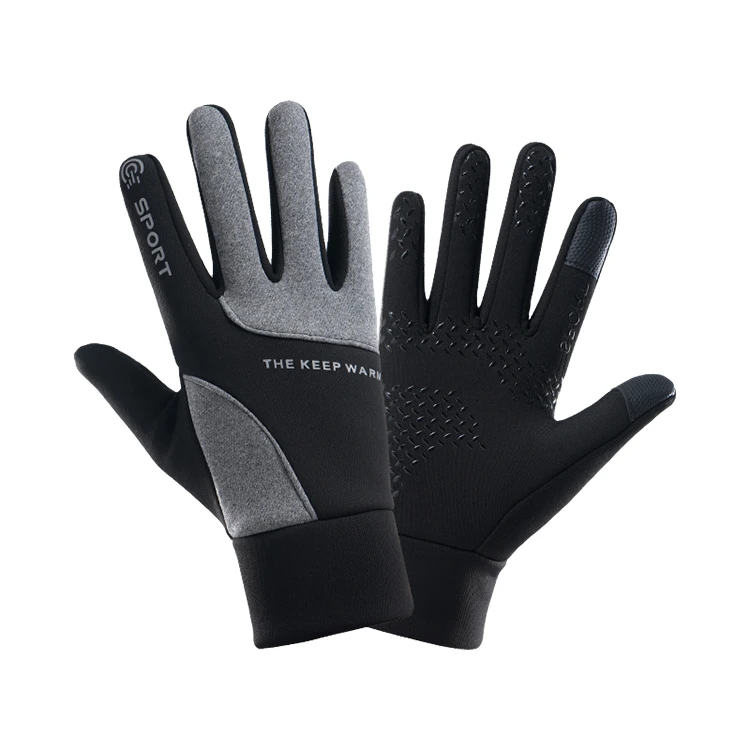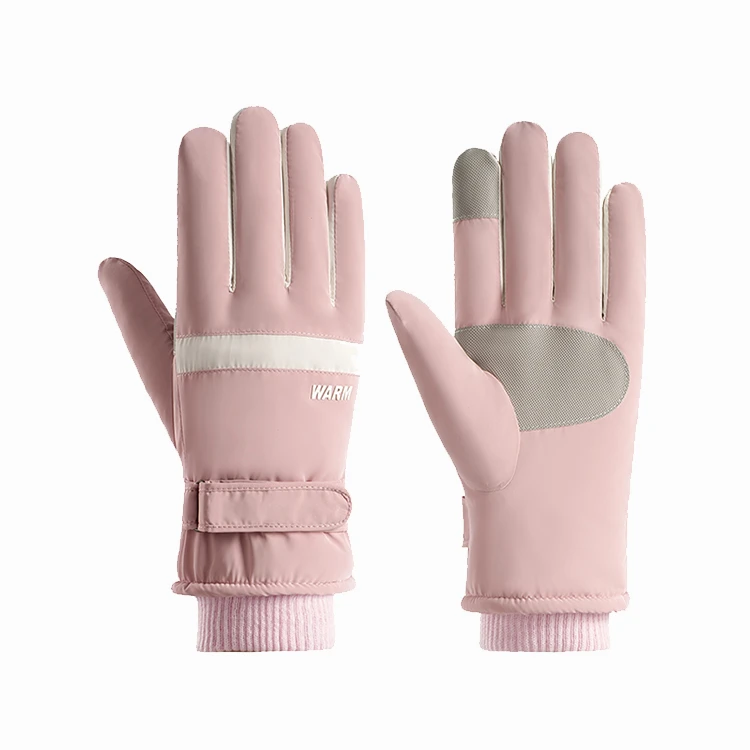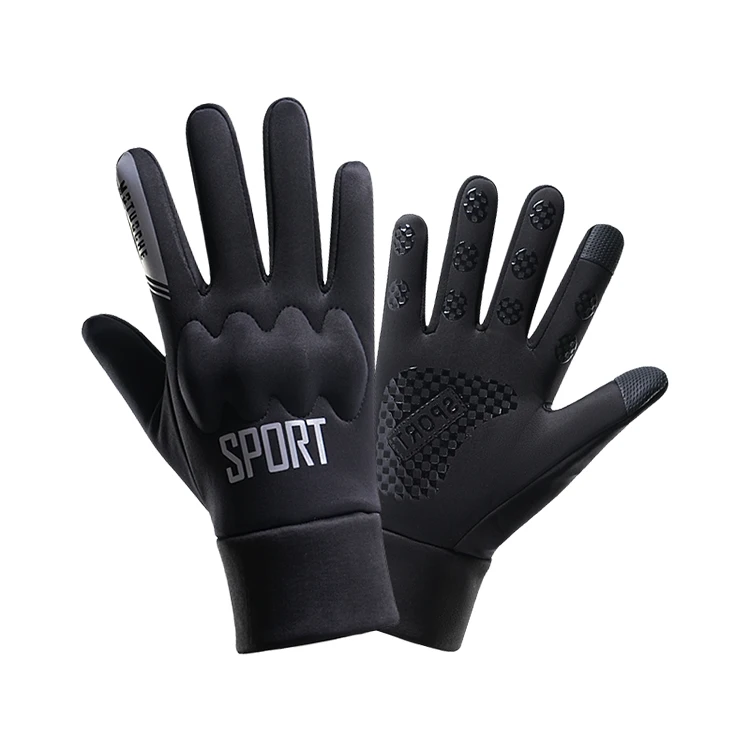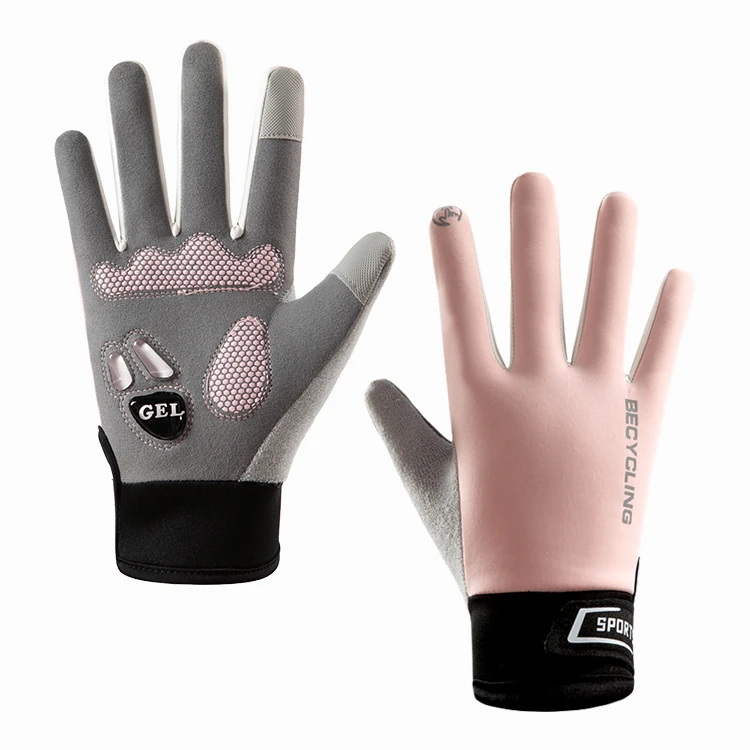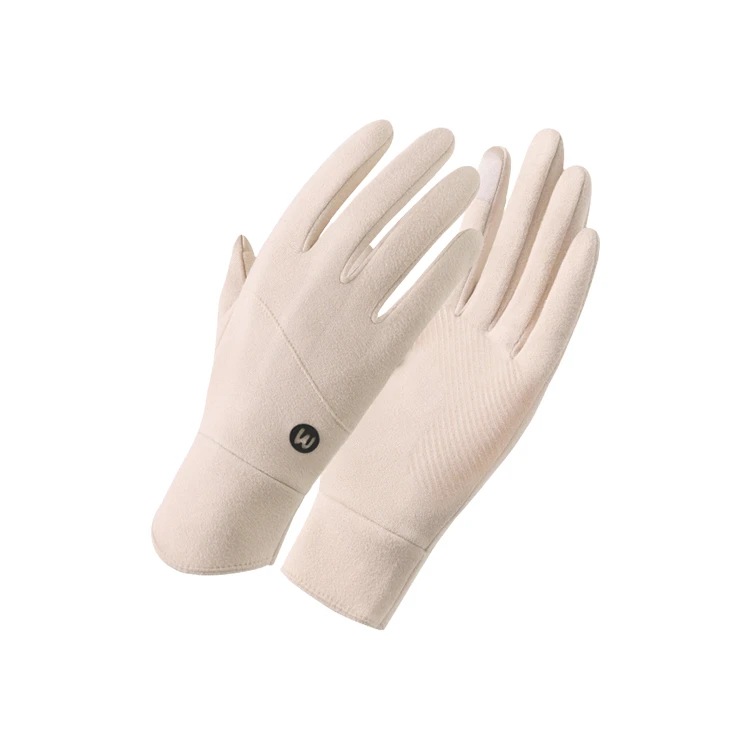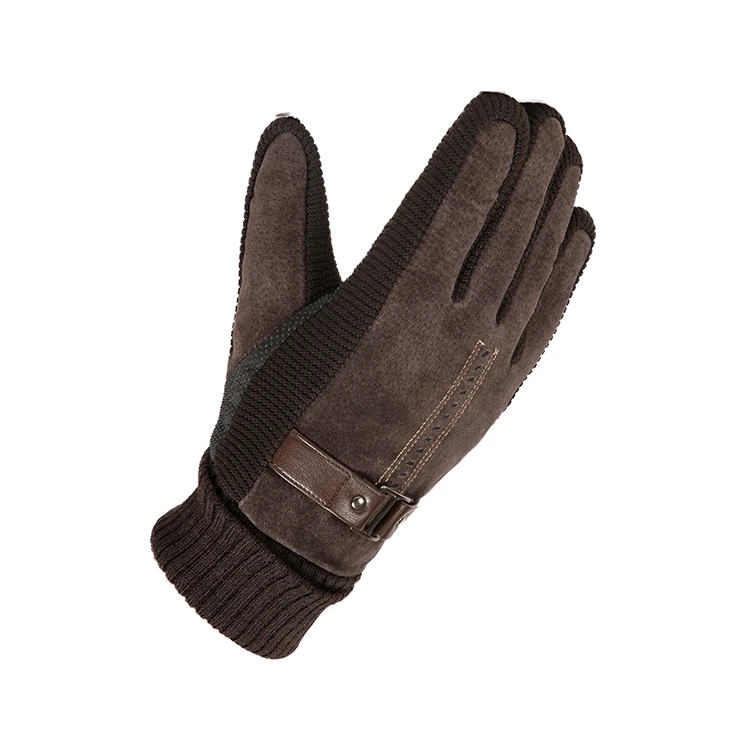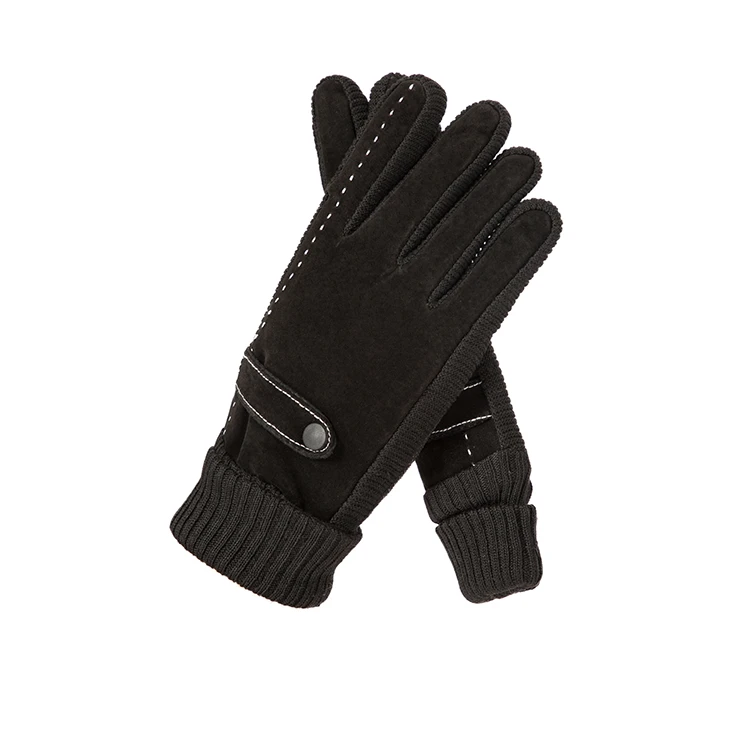Protective Waterproof Rubber Leather Industrial Work Gloves
Understanding Advanced Industrial Hand Protection
In today's dynamic industrial landscape, ensuring workforce safety without compromising productivity is paramount. The increasing complexity of manufacturing processes, coupled with stringent occupational health and safety regulations, necessitates specialized personal protective equipment (PPE). Among these, industrial gloves stand out as a critical barrier against various workplace hazards. Specifically, high-performance hand protection like Protective Gloves Wear Rubber Leather Industrial Gloves For Work Waterproof are engineered to meet the rigorous demands of challenging environments. These gloves integrate the robust durability of leather with the superior chemical and water resistance of rubber, creating a multifaceted protective solution for professionals across diverse sectors.
The design philosophy behind these specialized gloves focuses on mitigating risks associated with abrasion, cuts, punctures, impact, and exposure to liquids or certain chemicals, which are common in heavy industries. By providing a comprehensive shield, they significantly reduce the incidence of hand injuries, which remain a leading cause of workplace accidents globally. Furthermore, advancements in material science and ergonomic design ensure that while offering superior protection, these gloves also maintain tactile sensitivity and flexibility, allowing workers to perform intricate tasks efficiently and comfortably. This balance of safety, durability, and dexterity is crucial for enhancing overall operational efficiency and compliance.
The Manufacturing Process: Crafting Superior Protection
The production of advanced industrial gloves, such as Protective Gloves Wear Rubber Leather Industrial Gloves For Work Waterproof, involves a meticulous, multi-stage manufacturing process designed to integrate disparate materials while ensuring structural integrity and performance. This process typically begins with the careful selection and preparation of premium leather, often split grain or top grain, chosen for its inherent strength, abrasion resistance, and breathability. The leather is precisely cut using advanced CAD-guided systems to minimize waste and ensure consistent sizing. Concurrently, high-quality synthetic rubbers (e.g., nitrile, neoprene, or natural latex) are prepared. These rubbers undergo specific compounding to achieve desired properties such as waterproofing, chemical resistance, and flexibility, often through vulcanization processes that enhance their durability and elasticity.
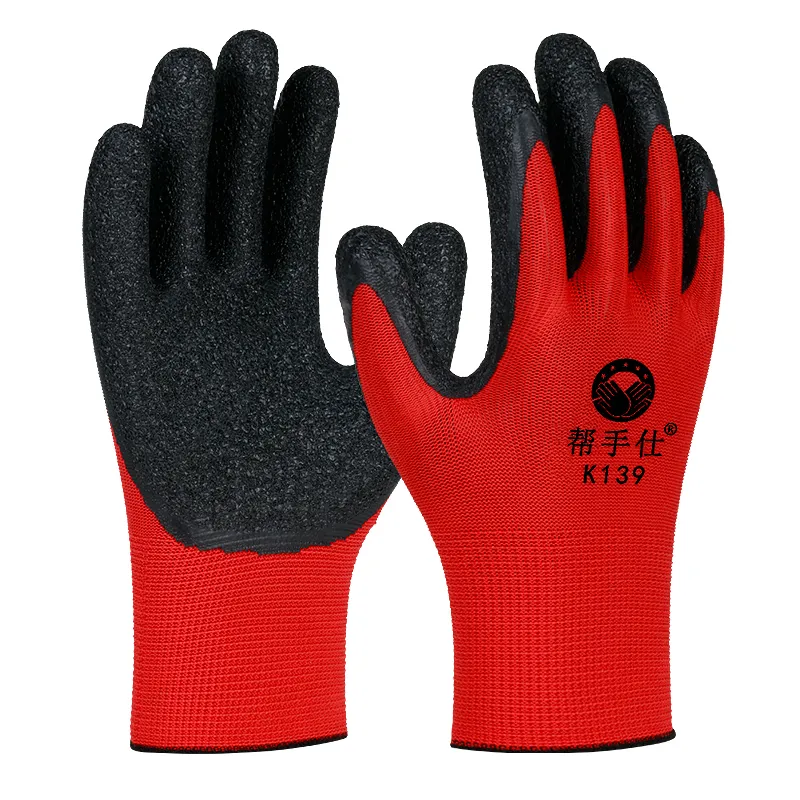
The core of the manufacturing lies in the precise integration of these materials. Leather components are often stitched using robust, high-tensile threads, creating the foundational structure of the glove. Subsequently, the rubber elements are applied, frequently through dipping, coating, or lamination techniques. For waterproofing and enhanced chemical resistance, a seamless rubber coating is applied to critical areas, often covering the palm and fingers, extending up to the wrist. This coating can be multi-layered to achieve specific levels of protection against various hazards. Each stage undergoes rigorous quality control checks. For instance, the integrity of the rubber coating is tested for pinholes and uniform thickness, while stitching strength is verified against pull-force specifications.
Final inspection protocols are comprehensive, adhering to international standards such as ISO 9001 for quality management systems and specific PPE standards like EN 388 for mechanical risks and EN 374 for chemical hazards. These tests assess parameters like abrasion resistance (EN 388 level), cut resistance (Coupe Test/TDM method), tear strength, puncture resistance, and permeation breakthrough time for various chemicals. This meticulous process ensures that each pair of Protective Gloves Wear Rubber Leather Industrial Gloves For Work Waterproof offers consistent, reliable protection, contributing to an extended service life and optimal performance in demanding industrial sectors such as petrochemicals, construction, heavy machinery operation, and general manufacturing, where superior grip and protection from oils, solvents, and abrasive materials are critical.
Technical Specifications and Performance Metrics
The effectiveness of industrial gloves is quantified by specific technical parameters and performance ratings, which provide critical insights for B2B decision-makers. For Protective Gloves Wear Rubber Leather Industrial Gloves For Work Waterproof, key specifications revolve around material composition, coating characteristics, and compliance with global safety standards. For instance, the choice of leather, whether cowhide, goatskin, or pigskin, influences factors like abrasion resistance, dexterity, and cost. Rubber coatings, such as NBR (Nitrile Butadiene Rubber) or PVC (Polyvinyl Chloride), determine the glove's resistance to oils, greases, and specific chemicals, as well as its waterproof capabilities. Nitrile, for example, is renowned for its excellent abrasion and puncture resistance, alongside its chemical barrier properties.
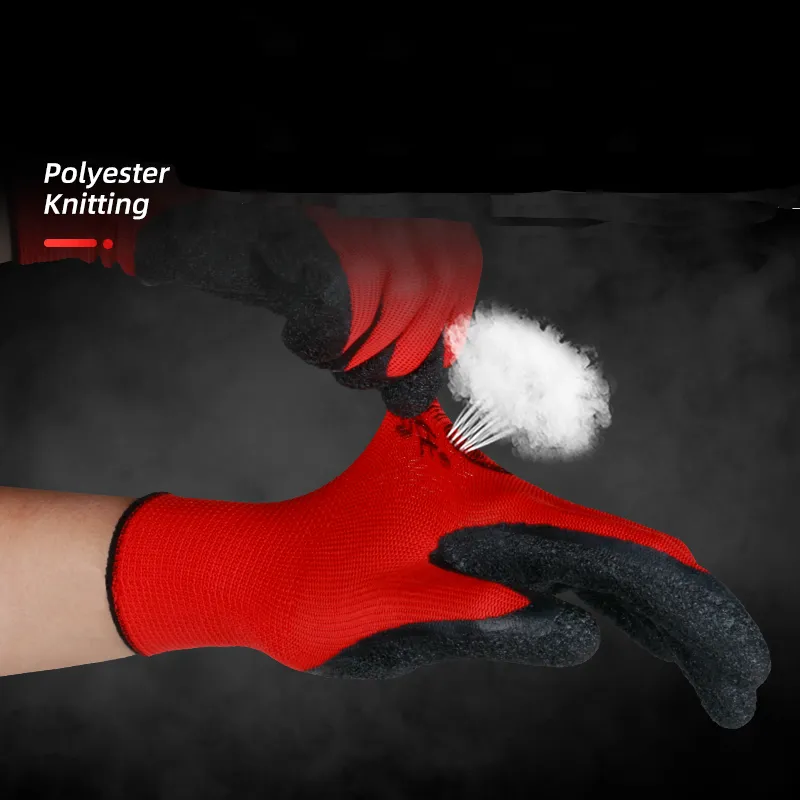
Performance metrics are largely dictated by international testing standards. The European standard EN 388 assesses mechanical risks, providing a four-digit pictogram indicating performance levels for abrasion, cut (Coupe test), tear, and puncture resistance. An updated version includes a 'TDM' cut resistance rating for high-performance materials. For chemical protection, EN 374 outlines requirements for gloves protecting against hazardous chemicals and microorganisms, with pictogram letters denoting resistance to specific chemicals (e.g., A for Methanol, K for Sodium Hydroxide). Waterproof integrity is often tested through water penetration tests, ensuring no liquid ingress over a specified duration.
Understanding these parameters is crucial for procurement managers and safety officers to select the appropriate PPE for specific job hazards. For instance, a glove with a high EN 388 abrasion rating (e.g., 4) and a strong TDM cut rating (e.g., D or E) is ideal for tasks involving sharp objects and abrasive surfaces. Similarly, the EN 374 chemical resistance letters provide clear guidance on suitability for tasks involving solvents, acids, or bases. This data-driven approach ensures optimal safety and extends the lifespan of the gloves, reducing replacement costs and downtime.
Application Scenarios and Industry Advantages
The versatility of Protective Gloves Wear Rubber Leather Industrial Gloves For Work Waterproof makes them indispensable across a multitude of heavy industrial and hazardous applications. In the construction sector, these gloves offer superior protection against abrasions from rough materials like concrete and rebar, as well as punctures from nails or splinters. The waterproof rubber coating is crucial when working in wet conditions, such as during plumbing installations or in outdoor construction sites susceptible to rain. For the oil and gas industry, their resistance to hydrocarbons, oils, and greases, coupled with exceptional grip in slick conditions, ensures safety during pipe handling, valve operation, and drilling activities.
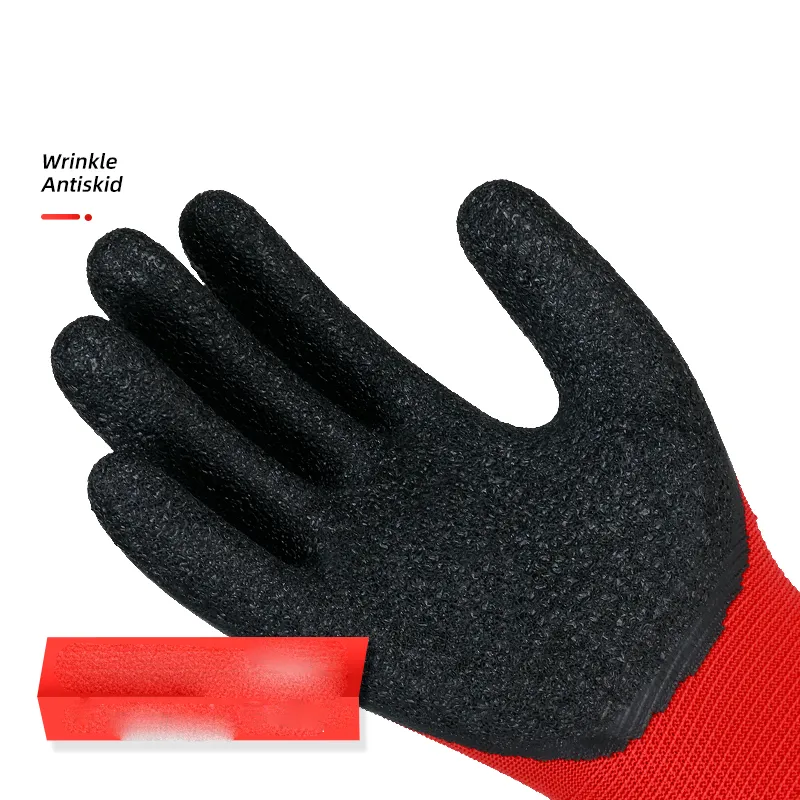
In metallurgy and metal fabrication, where workers handle sharp metal sheets, hot components, and abrasive surfaces, the combined cut and abrasion resistance of leather and robust rubber provides critical protection. The waterproofing also guards against coolants and cutting fluids. Within the chemical processing industry, these gloves are invaluable for handling non-corrosive liquids, cleaning agents, and performing maintenance in environments where chemical splashes are a risk, thanks to the chemical barrier properties of the rubber coating. Their extended lifespan, compared to single-material gloves, translates into reduced procurement frequency and overall cost savings for businesses.
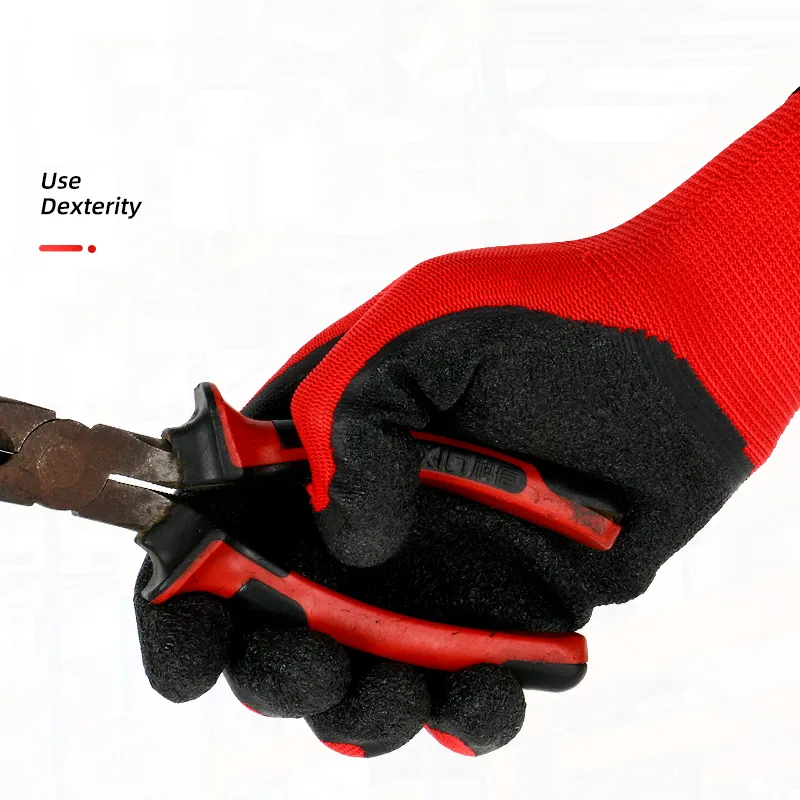
Feedback from various clients consistently highlights enhanced worker comfort and dexterity, even with the high level of protection. For instance, a large-scale waste management facility reported a 35% reduction in hand lacerations after adopting these gloves, while a leading automotive assembly plant noted improved grip on oily parts, leading to fewer drops and increased efficiency. These tangible benefits underscore the significant role such specialized PPE plays in boosting operational safety, compliance, and productivity across diverse high-risk industries, demonstrating the return on investment in quality hand protection.
Customization and Partnership Advantages
Recognizing that every industrial operation has unique safety requirements, leading manufacturers offer comprehensive customization options for Protective Gloves Wear Rubber Leather Industrial Gloves For Work Waterproof. This can range from specific material blends for enhanced chemical resistance or flexibility to tailored cuff lengths for extended forearm protection. Custom branding with company logos is also available, fostering a stronger safety culture and brand identity within the workforce. For large-scale industrial clients, bespoke solutions often involve close collaboration with the manufacturer's R&D team to engineer gloves that address very niche hazards, such as extreme temperatures, specialized chemicals, or unique ergonomic needs for repetitive tasks.
When selecting a supplier, authoritative certifications are paramount. A manufacturer holding ISO 9001 certification demonstrates a commitment to consistent quality management throughout the production process. Compliance with national and international PPE standards (e.g., ANSI/ISEA 105 in North America, CE marking with relevant EN standards in Europe) is non-negotiable, ensuring that the gloves meet recognized safety benchmarks. Furthermore, a reputable supplier often has an extensive service history, evidenced by long-term partnerships with major industrial players, and a dedicated technical support team to assist with product selection, training, and troubleshooting.
Our commitment extends beyond product delivery, offering a robust quality assurance program with a standard 12-month warranty against manufacturing defects. Typical delivery cycles for standard orders range from 4-6 weeks, with expedited options available for urgent requirements. For customized solutions, lead times are discussed on a project-by-project basis, involving a structured design and approval process. Our customer support infrastructure ensures prompt response to inquiries, technical assistance, and post-sales service, reinforcing the trustworthiness and reliability that B2B clients demand for critical safety equipment.
Frequently Asked Questions (FAQ)
-
Q: What makes Protective Gloves Wear Rubber Leather Industrial Gloves For Work Waterproof ideal for diverse industries?
A: Their hybrid construction combines the cut and abrasion resistance of leather with the waterproofing and chemical splash protection of rubber. This multi-hazard defense makes them suitable for environments involving sharp objects, rough surfaces, water, oils, and certain chemicals, prevalent in construction, manufacturing, and oil & gas sectors.
-
Q: How do these gloves comply with international safety standards?
A: Our gloves undergo rigorous testing to meet or exceed standards such as EN 388 (for mechanical risks like abrasion, cut, tear, puncture) and EN 374 (for chemical protection). They also adhere to general requirements of EN 420 for sizing and dexterity. Specific compliance details are available in the product's technical data sheet.
-
Q: Can these gloves be customized for specific industrial applications?
A: Yes, we offer extensive customization options including variations in leather type, rubber coating material and thickness, cuff length, liner materials for thermal insulation, and even custom branding. Our technical team works closely with clients to develop bespoke solutions tailored to unique operational hazards and ergonomic needs.
-
Q: What is the expected lifespan of these gloves under typical industrial use?
A: The lifespan varies based on the specific application, frequency of use, and exposure to hazards. However, due to the durable combination of leather and robust rubber, Protective Gloves Wear Rubber Leather Industrial Gloves For Work Waterproof are designed for extended wear compared to single-material gloves. Proper care and storage also contribute significantly to their longevity.
References
- European Committee for Standardization. (2016). EN 388: Protective gloves against mechanical risks.
- European Committee for Standardization. (2016). EN 374: Protective gloves against dangerous chemicals and micro-organisms.
- International Organization for Standardization. (2015). ISO 9001: Quality management systems — Requirements.
- American National Standards Institute / International Safety Equipment Association. (2016). ANSI/ISEA 105: American National Standard for Hand Protection Selection Criteria.
- Occupational Safety and Health Administration. (Various dates). OSHA Standards for Personal Protective Equipment (PPE).



